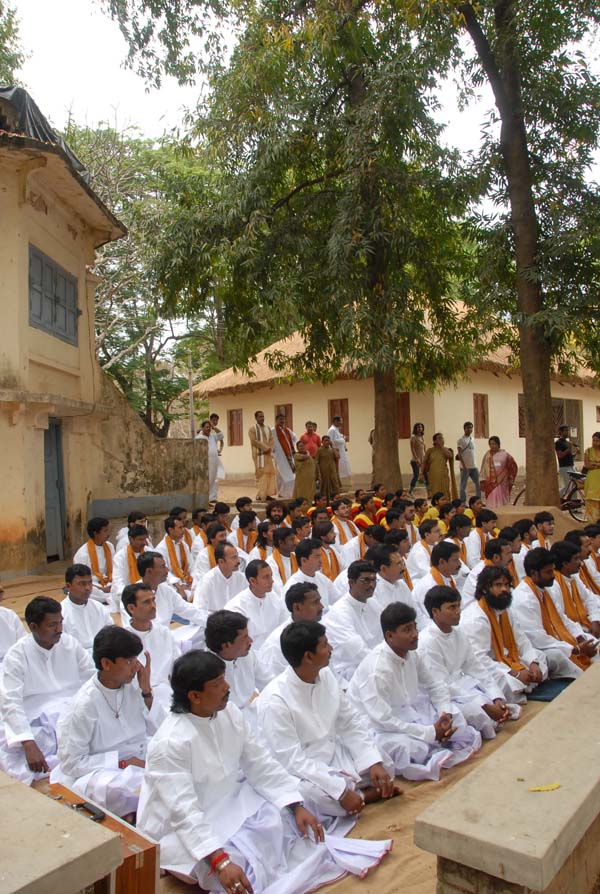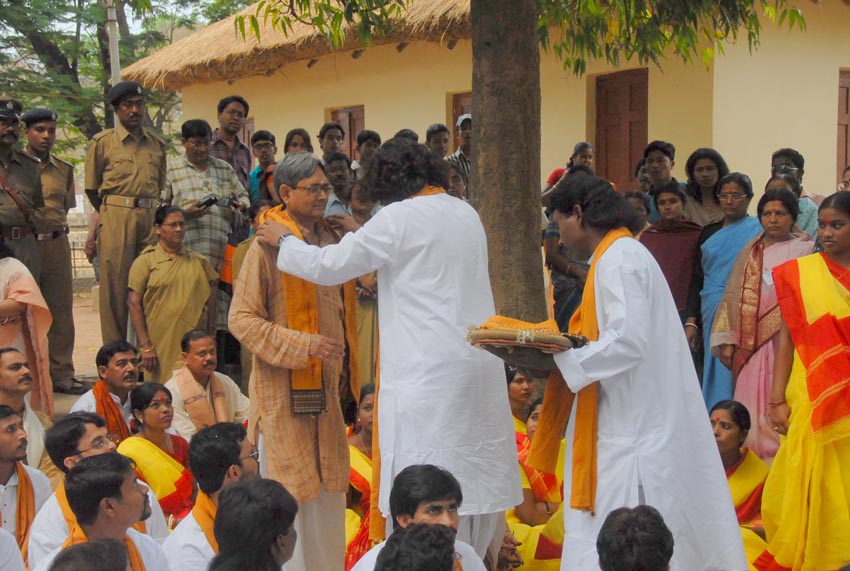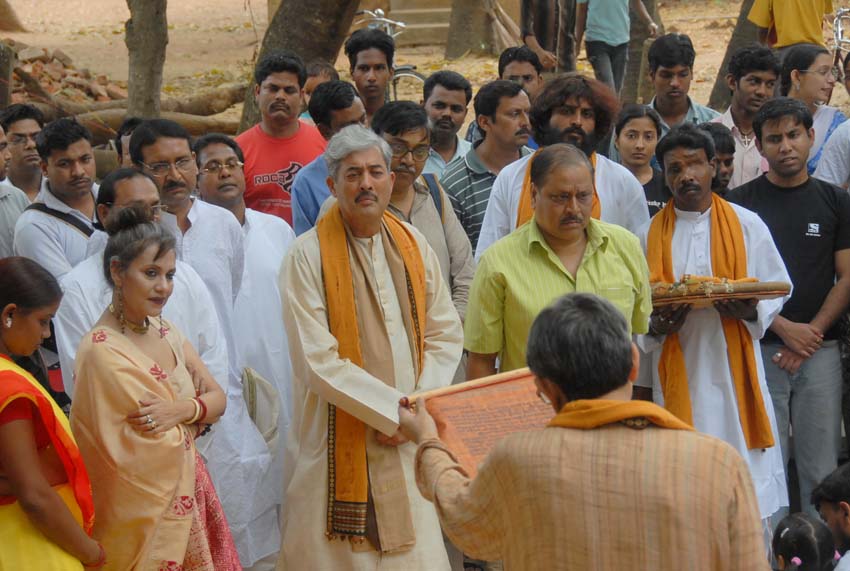
Tagore’s maiden theatrical work, Balmiki Pratibha is an Opera that narrates the most astonishing reformation in humankind. Partly adapted from mythology and the rest, the Bard’s imagination, that composes the dramatic transition of bandit Ratnakar to the poet-sage Balmiki, composer of the mythological epic poetry Ramayan. The original Lyrical-drama format of the Opera was later adapted to Dance-drama. Ms Roy furthered it by incorporating various new elements as Chau dance of Bengal, experimentation with music and unpolished colloquial rustic vocals and most surprisingly real offenders, convicted for various crimes, as the mainstay performers.
This landmark production changed the way society perceived those behind the forbidden walls of the PRISON. Performed over 66 times all around Kolkata and in various states of India, it has been a revolution rather than a mere Dance-drama. The first performance for the show was held within the prison, only for the inmates and the prison officials. Thereafter the first public performance outside the prison was held on 15th of November 2008 at Science City Auditorium, Kolkata. Later, the inmates travelled to Tagore’s Viswabharati University at Shantiniketan to perform for the Spring festival- Basanta Utsab, in 2009.
The notorious bandit Ratnakar commanded a band of dreaded dacoits who had tormented the entire of central India from the forest they lived in. The forest nymphs, the nearby villagers, the passersby and the creatures of the forest were in absolute fright and agony by the exploits of the bandit. Ratnakar was a devotee of the fierce Goddess Kali and believed in physical power. So he would sacrifice a life to the Goddess to appease her for the blessings of absolute power and strength. Saraswati, the goddess of true knowledge, wisdom and creativity was pained by his arrogance and ignorance. Thereby, to teach Ratnakar a lesson she takes the form of a little girl, and pretends to be lost in the forest. Subsequently, the band of dacoits prey on the little girl and takes her hostage, to be sacrificed by Ratnakar. The helplessness and innocent plea of the little girl moves the stone cold heart of Ratnakar. Overcome by emotions, he sets the girl free from his captivity and aborts his sacrifice of human life. Having committed an act of kindness, a virtue unknown to him, he starts to dwell in this new found feeling. Eventually, he loses interest in hunting forest animals and merciless killings, quits his profession of a dacoit and subsequently is deserted by his gang of bandits. Drifting aimless through the woods he comes across tribal bird-hunters, who were about to hunt down a pair of birds perched on a branch. He tries to persuade them not to kill the pair of innocent birds in love, but fails. The birds are hunt down. In a fit of desperate anguish he curses the bird-hunters in Sanskrit, the language of the gods, unknown to him. He shocks himself with this strange utterance and wonders how he could have spoken in a alien language ! Perplexed, he hears the enchanting strains of a musical string instrument, Veena. Following the music, he encounters a brilliant heavenly light and a woman in white playing the Veena, in all its ethereal splendour. He experiences eternal peace and enlightenment and the apparition vanishes in a while. He is left longing, to experience further and is intrigued. Lakshmi, the goddess of wealth and prosperity tries to tempt him with abundance and asks him to stop his quest for the ethereal apparition. But he refuses the rich abundance, longing only for the peace that his heart had felt in ages. While, he is left alone with the repentance of his deeds and yeaning for true contentment. Saraswati, reappears and reveals her true self and her mission to Ratnakar. The eternal Goddess pleased with his absolute surrender blesses him with the knowledge and power to create, music and literature. He transforms into sage Balmiki, the legendary author of the epic poetry RAMAYAN.
The dance drama mesmerises with songs and movements like, “Ek dore bandha aachi mora sakole”, “Enechi mora enechi mora rashi rasi luter bhaar”, “Eto rango shikhecho kota mundomalini”, “Ranga podo podmojuge”, “Rim jhim ghono ghono rey”, etc. The choreography is composed of different forms of martial art, martial dance, folk dance, and movements of Indian classical dance.
The costumes and stage properties were made in the Presidency Correctional Home by the inmates. The music composition by Sreekumar Banerjee, debuts the then IG Prison (WB) Mr B. D. Sharma as the voice of the Protagonist, while the chorus were by the male and female inmates of the Correctional Homes. The cast compromised of both the inmates and the working staff of the Correctional Homes. The role of Saraswati, remains iconic with the performance of Ms Roy, till this day.













































